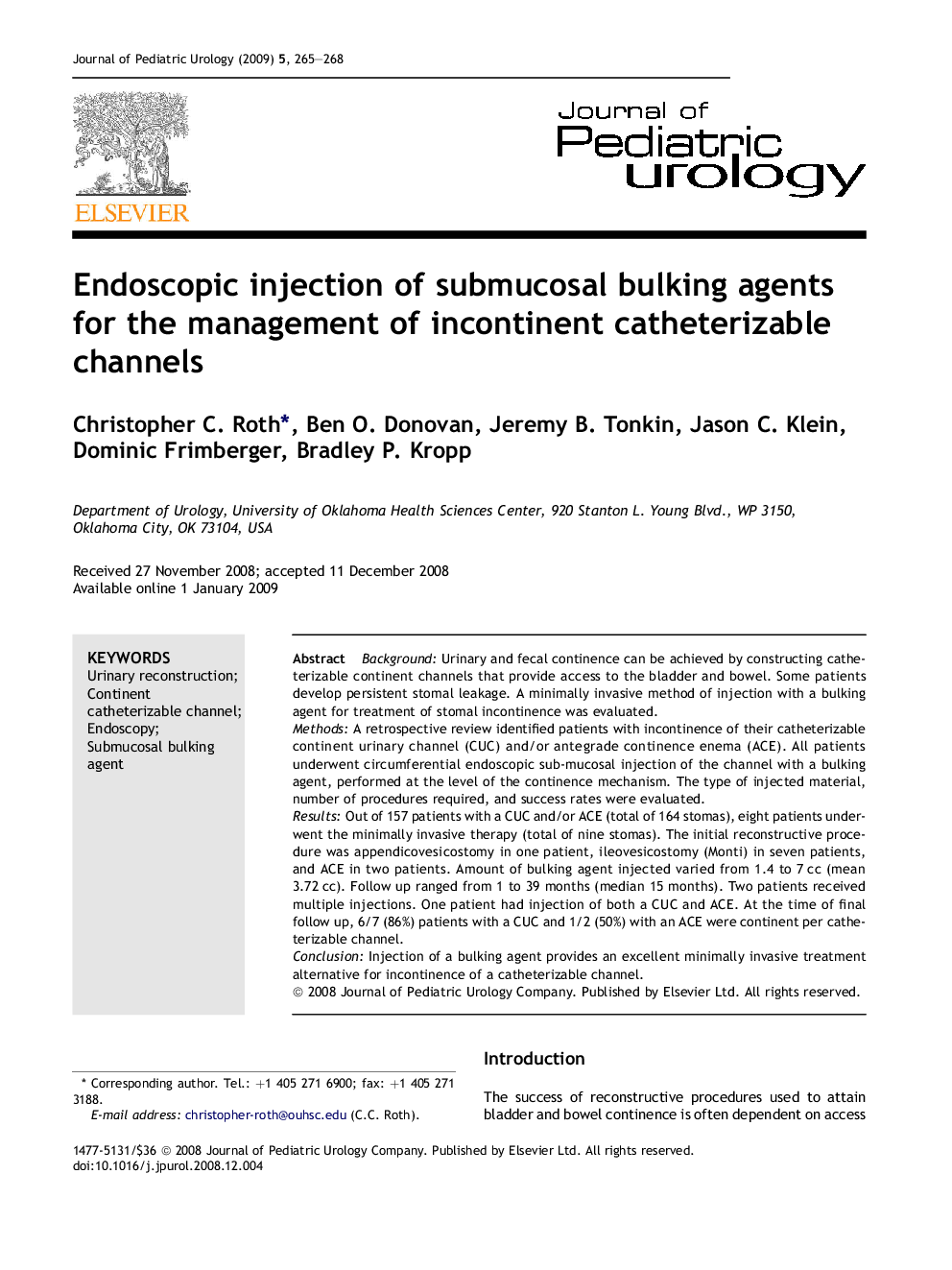| Article ID | Journal | Published Year | Pages | File Type |
|---|---|---|---|---|
| 4163724 | Journal of Pediatric Urology | 2009 | 4 Pages |
BackgroundUrinary and fecal continence can be achieved by constructing catheterizable continent channels that provide access to the bladder and bowel. Some patients develop persistent stomal leakage. A minimally invasive method of injection with a bulking agent for treatment of stomal incontinence was evaluated.MethodsA retrospective review identified patients with incontinence of their catheterizable continent urinary channel (CUC) and/or antegrade continence enema (ACE). All patients underwent circumferential endoscopic sub-mucosal injection of the channel with a bulking agent, performed at the level of the continence mechanism. The type of injected material, number of procedures required, and success rates were evaluated.ResultsOut of 157 patients with a CUC and/or ACE (total of 164 stomas), eight patients underwent the minimally invasive therapy (total of nine stomas). The initial reconstructive procedure was appendicovesicostomy in one patient, ileovesicostomy (Monti) in seven patients, and ACE in two patients. Amount of bulking agent injected varied from 1.4 to 7 cc (mean 3.72 cc). Follow up ranged from 1 to 39 months (median 15 months). Two patients received multiple injections. One patient had injection of both a CUC and ACE. At the time of final follow up, 6/7 (86%) patients with a CUC and 1/2 (50%) with an ACE were continent per catheterizable channel.ConclusionInjection of a bulking agent provides an excellent minimally invasive treatment alternative for incontinence of a catheterizable channel.
